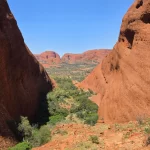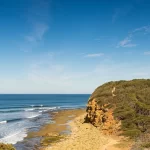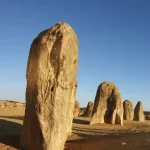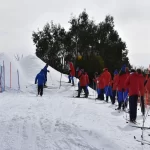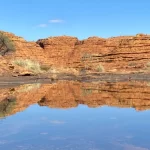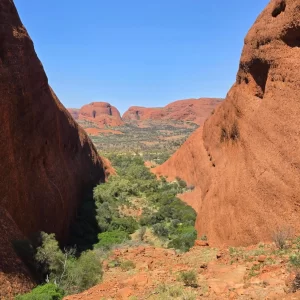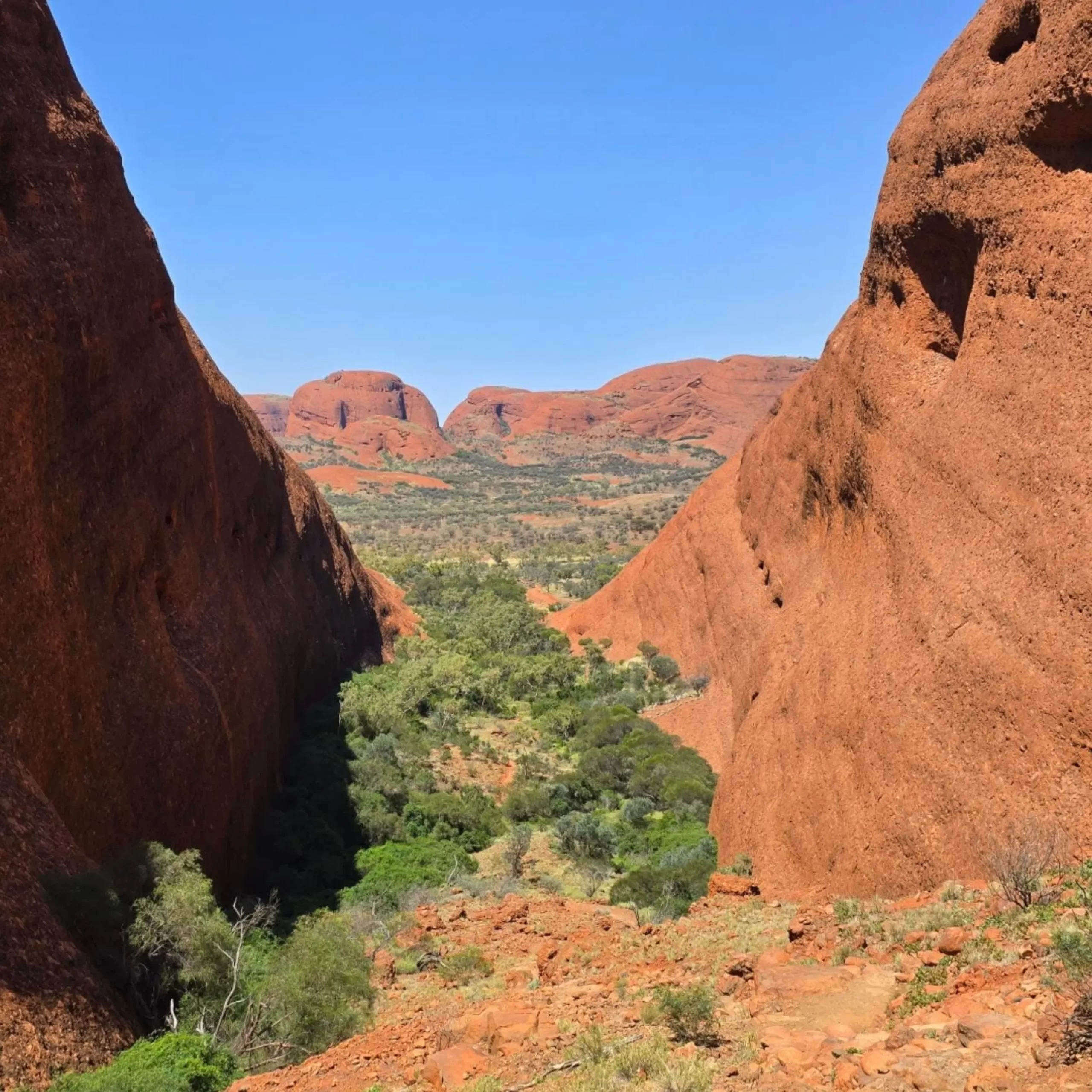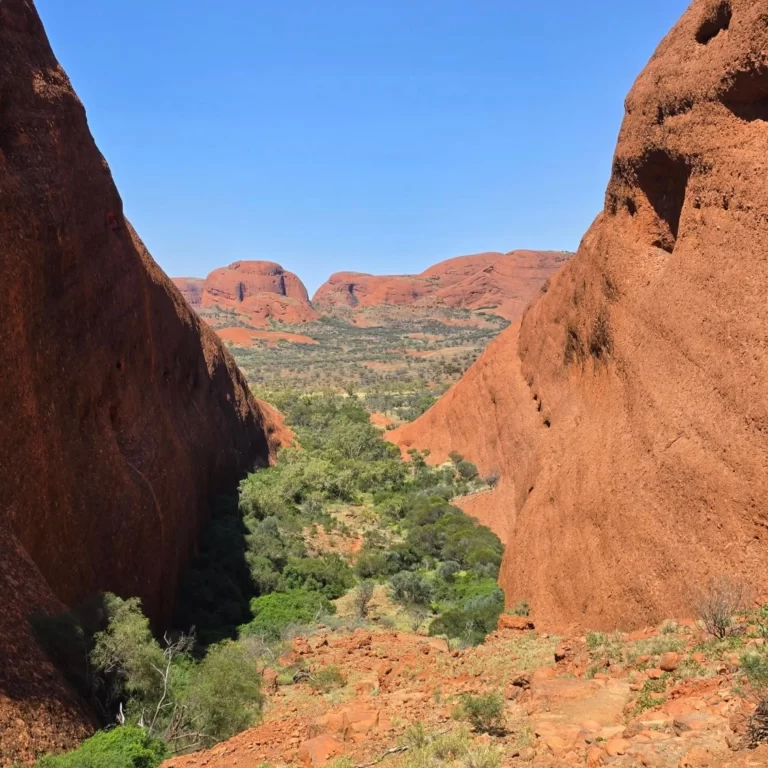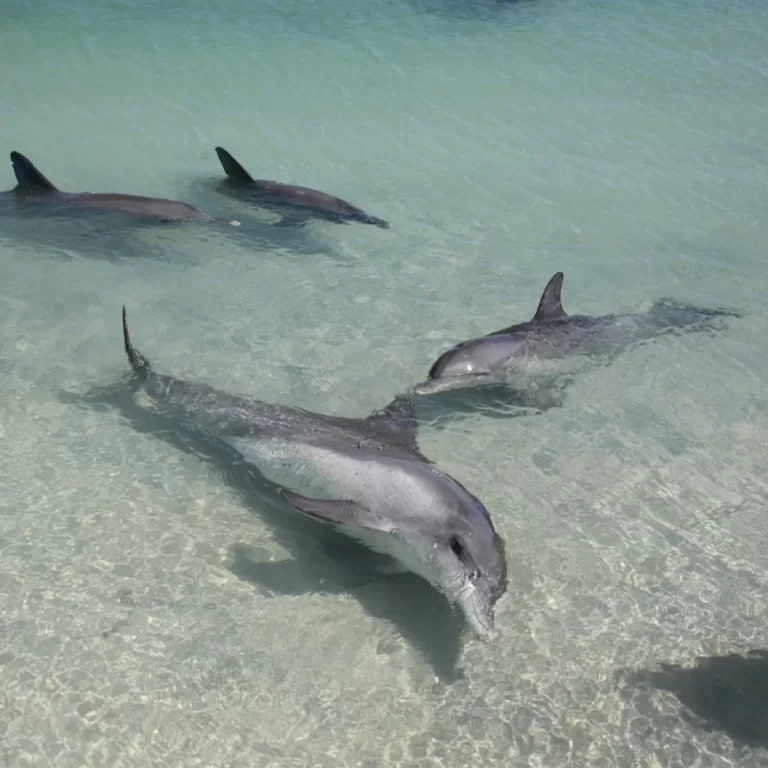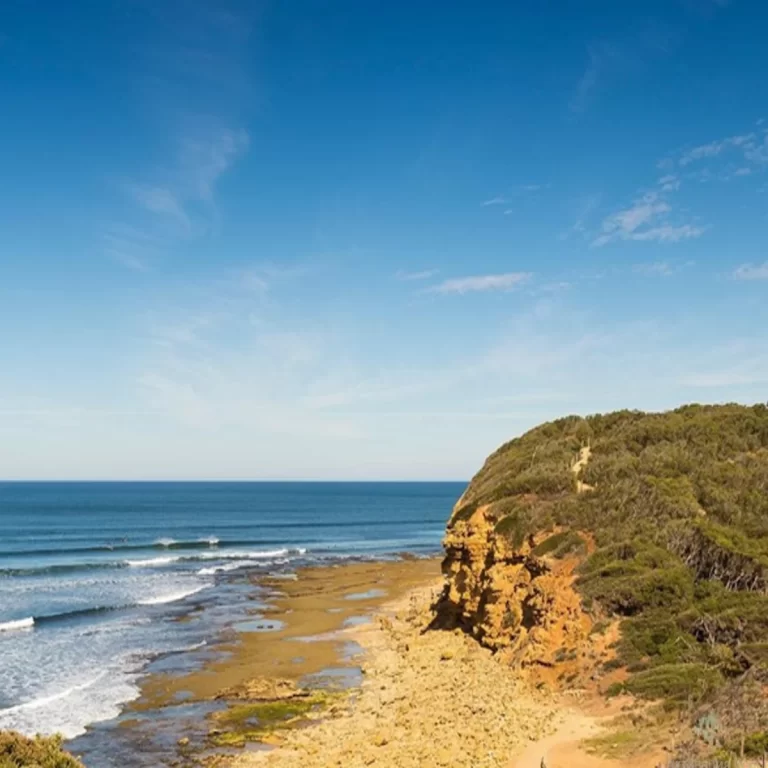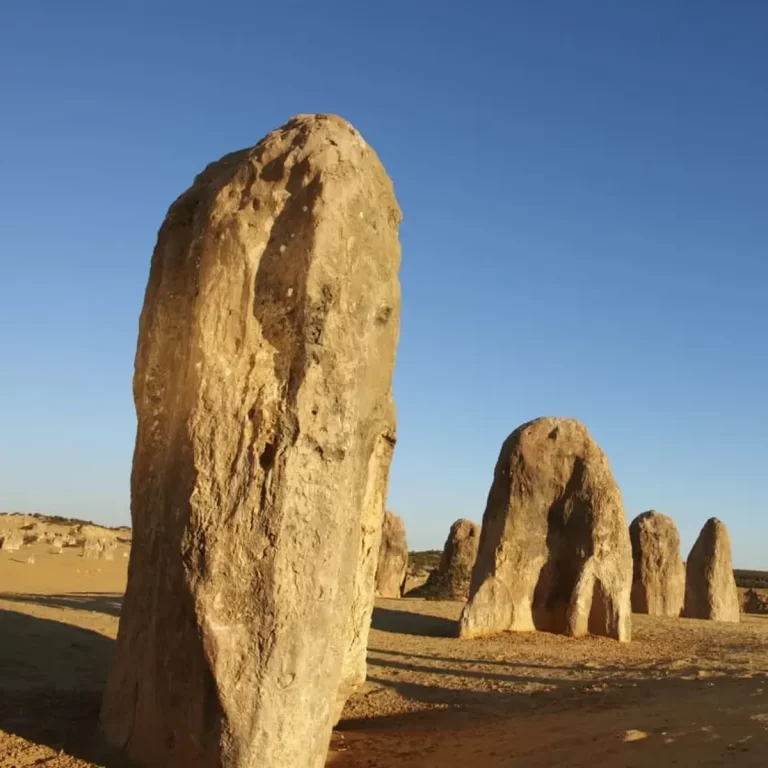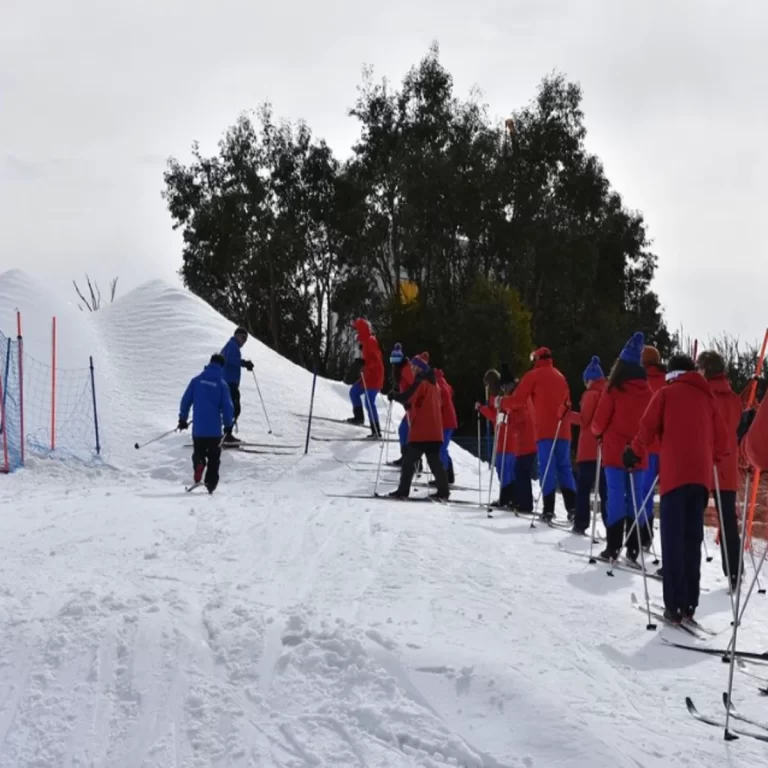Located in the stunning Kata Tjuta National Park, just a short drive from Ayers Rock (Uluru), Kata Tjuta is an unforgettable experience that showcases the natural beauty, cultural importance and geological wonders of the area. This iconic spot is in the heart of the Northern Territory, in one of Australia’s most sacred and oldest landscapes. Known as “The Olgas”, Kata Tjuta has 36 domed rock formations rising dramatically from the desert plain.
For anyone visiting Central Australia, Kata Tjuta is the perfect addition to Uluru, you’ll get to experience Aboriginal culture, sunrise views and deep spiritual significance. Whether you’re a first timer or a seasoned traveller, exploring Kata Tjuta is a must do.
The Mystical Significance
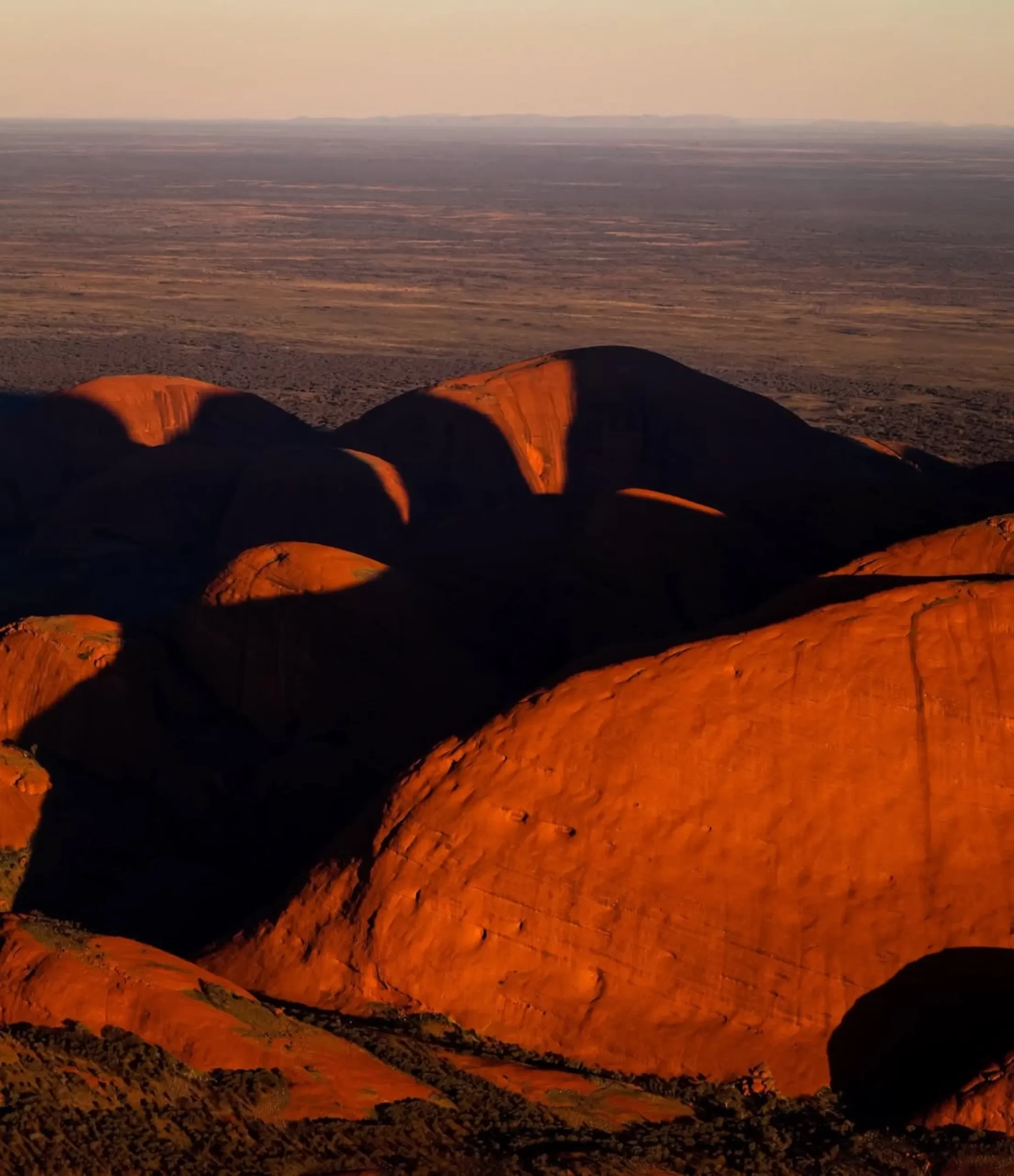
The name Kata Tjuta means “many heads” in the local Anangu language, referring to the many domes that make up this otherworldly landscape. The traditional owners, the Anangu people, consider these geological formations sacred and deeply connected to Aboriginal creation stories and the Dreamtime. For over 30,000 years, the Anangu people have kept the cultural stories and traditions of the land intact, making it one of the most sacred sites in the world.
The stories of Kata Tjuta are woven into the very fabric of Anangu culture. They believe Kata Tjuta is home to spirit ancestors and the area is still used today for ceremonies. These sacred sites are connected to the Dreamtime, so every time you visit this region you can reflect on Australia’s cultural history.
Key Attractions
Visitors to Kata Tjuta can do many things to experience the natural beauty, ancient rock formations and landscapes of the park. Whether you’re after a peaceful walk through the desert or an adventure, Kata Tjuta has something for everyone.
Walpa Gorge Walk
The Walpa Gorge Walk is one of the most popular walks in the park, an easy 2.6km walk between the domes of Kata Tjuta. This walk takes you through the narrow gorge, surrounded by sand dunes, native vegetation and rock walls. You’ll get up close to the conglomerate rock formations that make Kata Tjuta so unique. Best to do this walk early in the morning as the sun rises and casts a golden glow over the rocks, it’s truly breathtaking.
Valley of the Winds Walk
For the more adventurous, the Valley of the Winds Walk is a must-do. This 7.4km loop takes you into the heart of Kata Tjuta and offers stunning views of the desert horizon and ancient landscapes. The walk passes through Karu Lookout and Karingana Lookout, both with spectacular views. The Valley of the Winds is the perfect place to get away from it all and be still, where the only sounds are the wind and the whispers of time.
Sunset Viewing
Just like Uluru sunset, the sunset at Kata Tjuta is special. As the day winds down the domes turn red, orange and purple and become a kaleidoscope of colour. The sunset viewing platform at Kata Tjuta is the perfect spot to sit back and enjoy the view with a glass of wine or simply take in the wildness of the outback. Watching the sun go down behind the domes is a once in a lifetime experience.
Cultural Significance Tours
If you want to learn more about the cultural history of the area join a guided cultural presentation. Led by local Anangu guides these Uluru tours will give you an insight into the creation myths, Aboriginal history and spiritual significance of Kata Tjuta. You will hear stories passed down through generations and gain a deeper understanding of the cultural heritage of the land. The tours also explain the community guidelines that protect this UNESCO World Heritage site.
Talinguru Nyakunytjaku Viewing Area
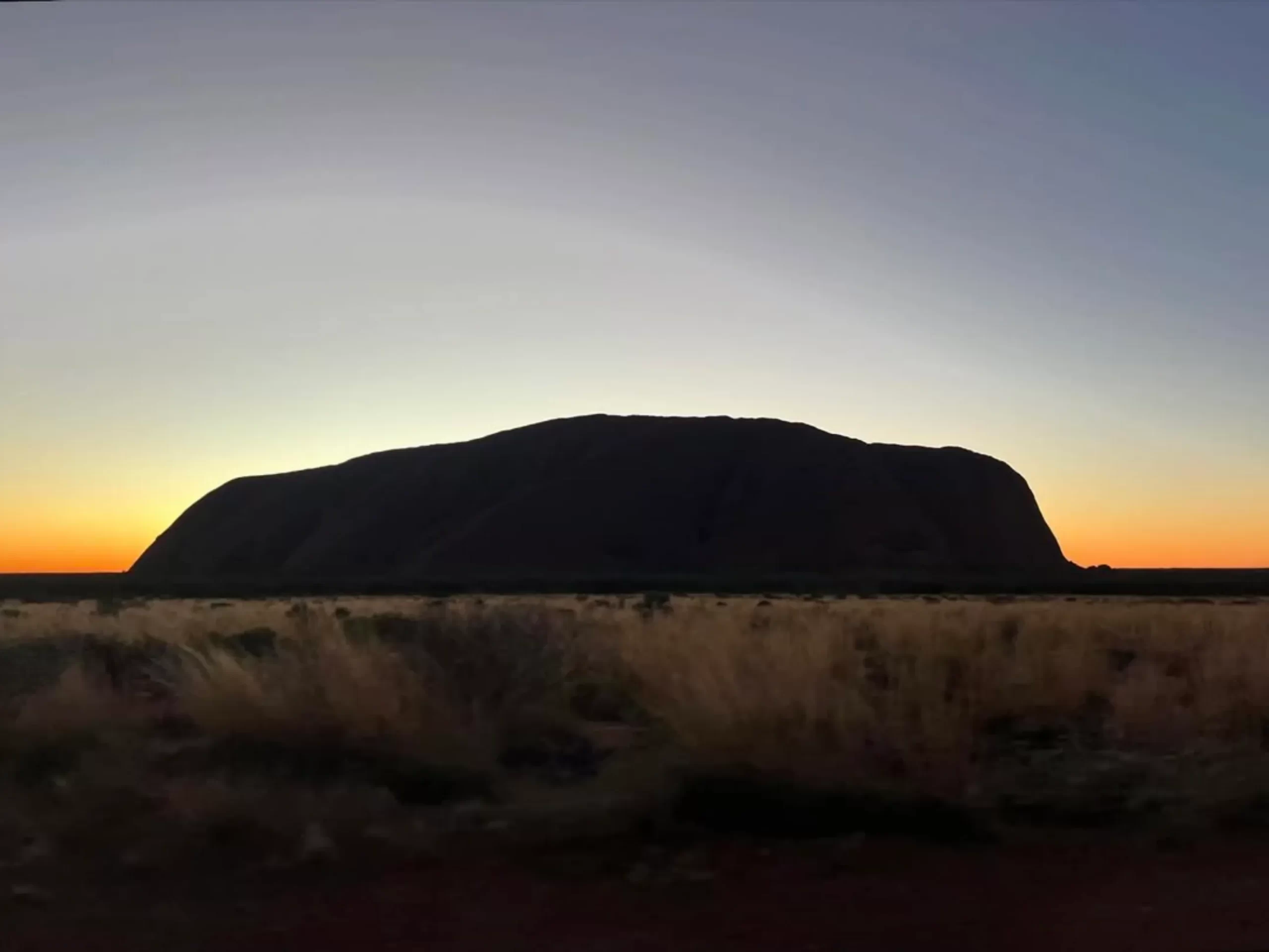
The Talinguru Nyakunytjaku viewing area offers a great lookout over both Uluru and Kata Tjuta so you can see the scale and beauty of these icons. From here you can watch the Uluru Sunrise or take photos of the dawn light on the desert sky. Watching the sun rise over these Australian icons is a great way to start the day.
Surrounding Region
In addition to Kata Tjuta, the surrounding Central Australia region has many other attractions that showcase the beauty and culture of the outback.
Kings Canyon
Only a few hours from Kata Tjuta, Kings Canyon is another chance to see the unique geology of the Northern Territory. Famous for its deep red sandstone cliffs and valley floor, Kings Canyon is a hiker and nature lover’s paradise. The Kings Canyon Camping Safari is an outback experience like no other, with private campsites, twin safari tents and the chance to walk the landscape.
Watarrka National Park
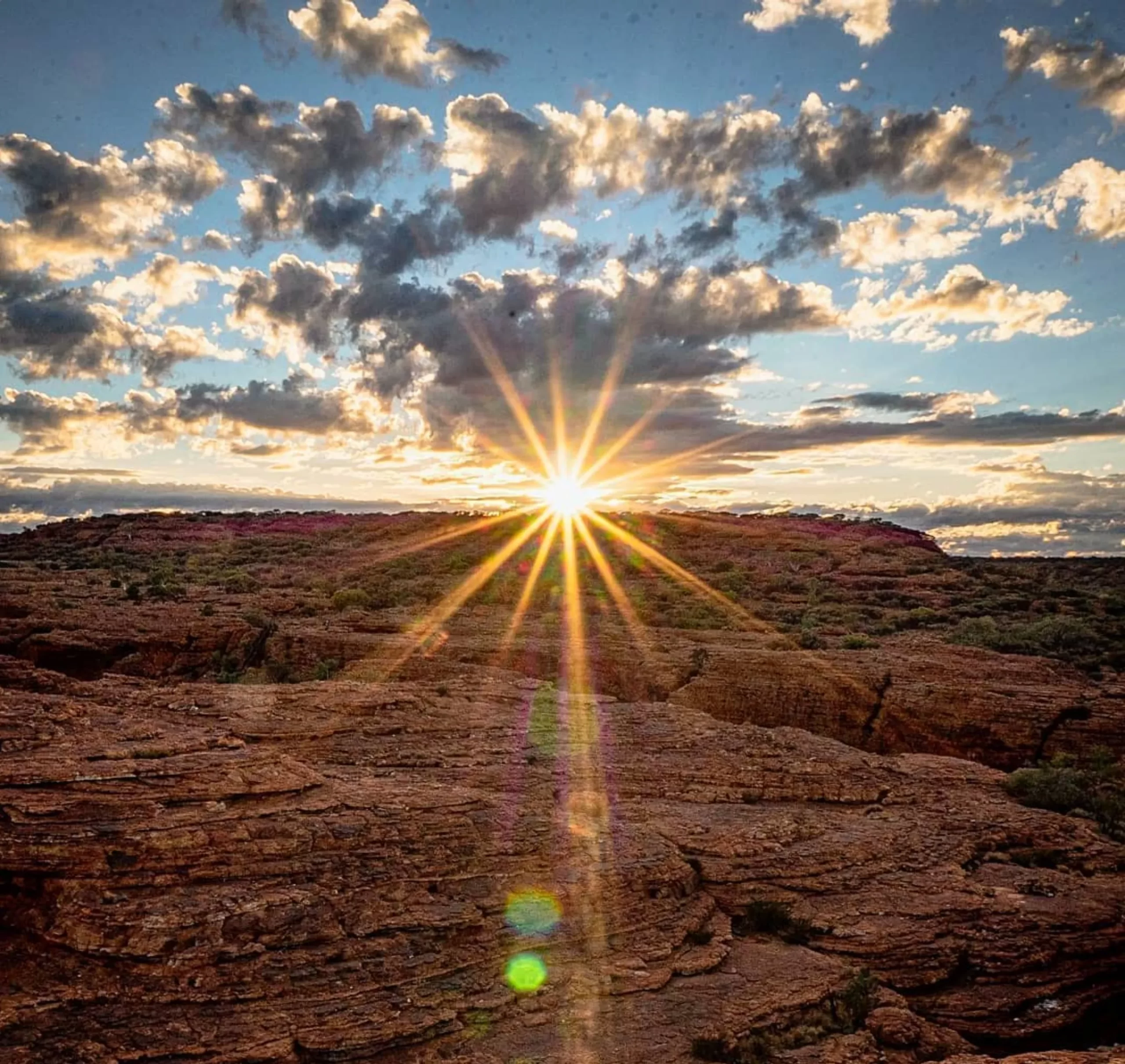
Near Kings Canyon, Watarrka National Park is a paradise of tourist attractions and must sees including Kantju Gorge and the red rock cliffs of the canyon. The park has a range of walking trails from short walks to more challenging hikes so you can explore the outback at your own pace.
Ayers Rock Resort
Near Ayers Rock Airport, Ayers Rock Resort is the perfect base to stay in the Northern Territory. The resort has a range of accommodation from budget to luxury and a variety of tours to Kata Tjuta including interpretive walks, sunrise and sunset viewing and cultural presentations. The resort also has several dining options where you can enjoy Australian wines and local produce so you can unwind after a day of adventure.
Tips
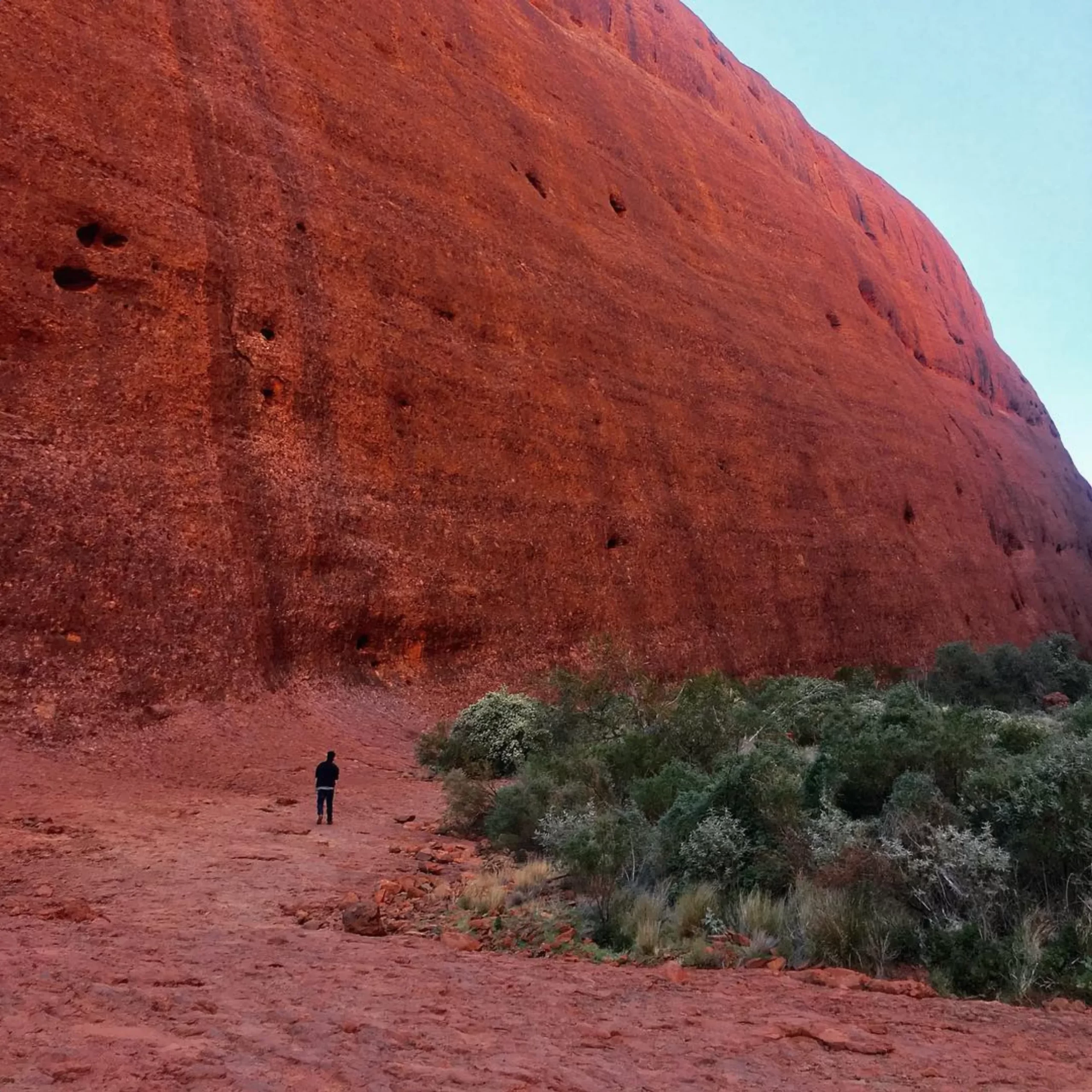
Booking a trip to Kata Tjuta National Park requires some planning to ensure a safe and enjoyable experience. Here are a few things to consider:
- Booking: Book your 3 Day Uluru tour well in advance, especially during peak season, so you can book your accommodation at Ayers Rock Resort and have time to plan your activities.
- Park Pass: Make sure you purchase your park pass in advance, as this is required for entry into Kata Tjuta National Park and Uluru-Kata Tjuta National Park.
- Fitness: The walks in Kata Tjuta vary in difficulty so make sure you assess your fitness level and choose the trail that suits you. The Valley of the Winds Walk is more challenging than the Walpa Gorge Walk so plan accordingly.
- Extreme Temperatures: The desert can get very hot during summer, so always carry plenty of water, wear a hat and apply sunscreen to protect yourself from the sun.
- Best Time to Visit: The cooler months, May to September, are the best time to visit Kata Tjuta as the temperatures are more suitable for outdoor activities. Visiting at sunrise or sunset is the best time for photography and to avoid the heat of the day.
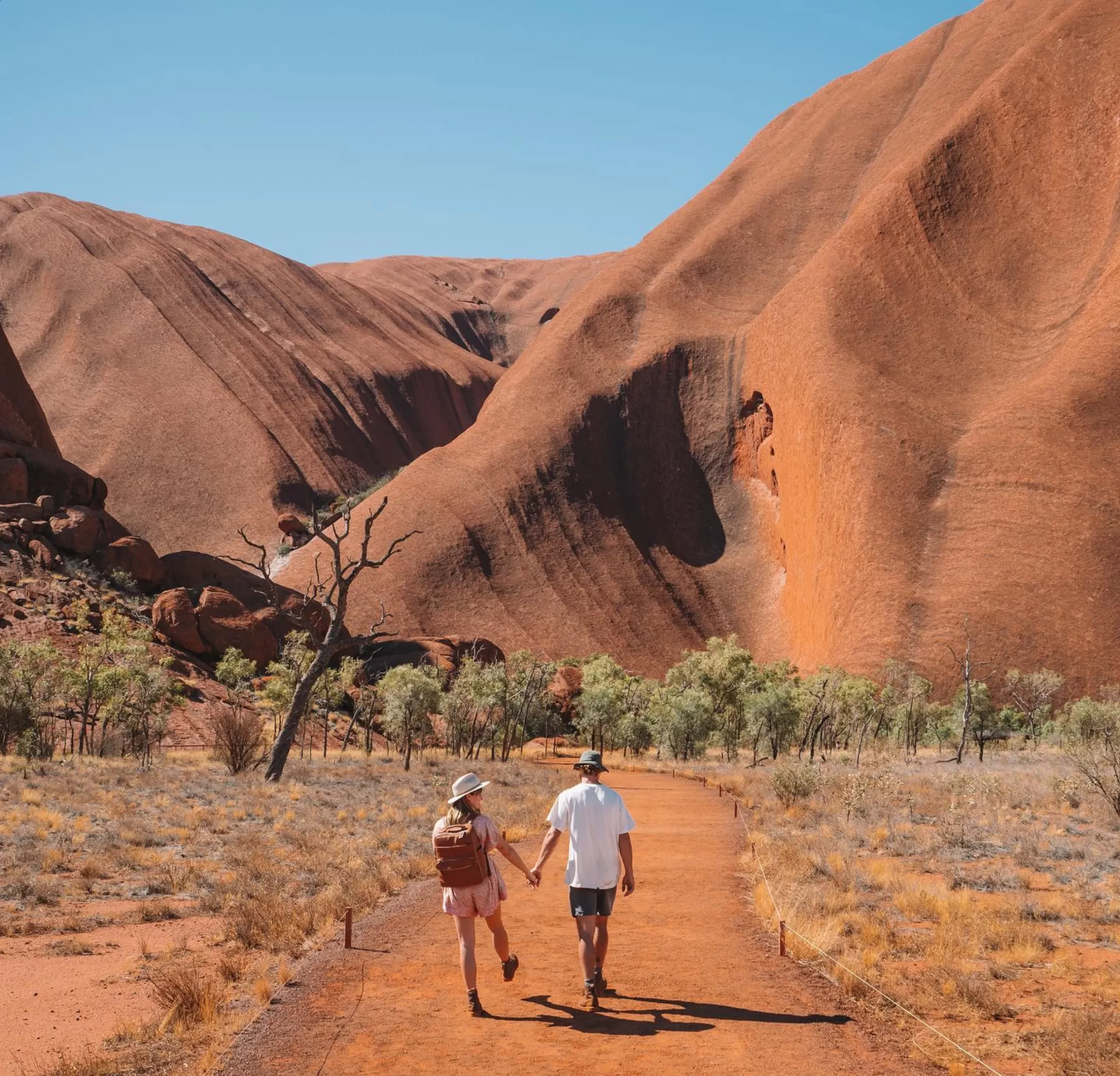
Kata Tjuta has stories, landscapes and rock formations like nowhere else in Australia. Whether you’re walking the Valley of the Winds, stargazing, or simply taking in the desert views, a visit to Kata Tjuta National Park is a once-in-a-lifetime experience.
FAQ
How far is Kata Tjuta from Ayers Rock?
Kata Tjuta is 50km west of Ayers Rock, a 40 minute drive from Ayers Rock Resort. You can easily visit both in a day if you have a car or join a Uluru tour.
Why is Kata Tjuta important to Aboriginal culture?
Kata Tjuta is a sacred site for the Anangu people, who believe it is connected to important dreaming stories. The domes of Kata Tjuta are the home of the spirit ancestors and the area is still used for ceremonies by the Aboriginal community.
Can I climb Kata Tjuta?
No, climbing Kata Tjuta is not allowed for cultural reasons. You can walk the designated trails and learn about the cultural significance through cultural presentations and guided tours.
What to bring?
Bring water, sun protection, good shoes and a camera to capture the views. Pack a picnic and take a moment to enjoy the views at one of the many lookouts throughout the park.
Is there accommodation nearby?
Yes, Ayers Rock Resort has a range of accommodation from budget to luxury, all within walking distance of Ayers Rock Airport. Perfect for visiting Kata Tjuta and Uluru.
